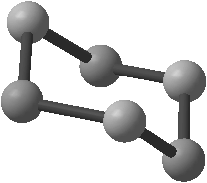

|
ì ï ï í ï ï î |
|
(1) |
| t1 | t2 | t3 |
| 10.85770360 | 0.7795480449 | 0.7795480451 |
| - 10.85770360 | - 0.7795480449 | - 0.7795480451 |
| 0.3320730984 | 4.625181601 | 4.625181601 |
| - 0.3320730984 | - 4.625181601 | - 4.625181601 |
| 0.7795480449 | 0.7795480449 | 0.7795480451 |
| 0.7795480449 | 10.85770360 | 0.7795480451 |
| 0.7795480440 | 0.7795480457 | 10.85770360 |
| 4.625181601 | 4.625181601 | 4.625181601 |
| 4.625181601 | 0.3320730984 | 4.625181601 |
| 4.625181600 | 4.625181613 | 0.3320730984 |
| - 0.7795480440 | - 0.7795480457 | - 10.85770360 |
| - 0.7795480449 | - 0.7795480449 | - 0.7795480451 |
| - 0.7795480449 | - 10.85770360 | - 0.7795480451 |
| - 4.625181600 | - 4.625181613 | - 0.3320730984 |
| - 4.625181601 | - 4.625181601 | - 4.625181601 |
| - 4.625181601 | - 0.3320730984 | - 4.625181601 |
[-310+959*x[2]^2+774*x[3]^2+1389*x[2]*x[3]+1313*x[2]^2*x[3]^2, -365+755*x[3]^2+917*x[1]^2+1451*x[1]*x[3]+1269*x[3]^2*x[1]^2, -413+837*x[1]^2+838*x[2]^2+1655*x[1]*x[2]+1352*x[1]^2*x[2]^2];
[.86605*x[2]^2*x[3]^2+.50000*x[2]^2+2.*x[2]*x[3]+.50000*x[3]^2-.86605, .86605*x[3]^2*x[1]^2+.50000*x[1]^2+2.*x[1]*x[3]+.50000*x[3]^2-.86605, .86605*x[1]^2*x[2]^2+.50000*x[1]^2+2.*x[1]*x[2]+.50000*x[2]^2-.86605];
[ 1.334568086*x[2]^2*x[3]^2+.8485720485*x[2]^2+1.302855903*x[2]*x[3]+ .8485720484*x[3]^2-.2888519406, 1.334568086*x[1]^2*x[3]^2+.8485720484*x[1]^2+1.302855903*x[1]*x[3]+ .8485720485*x[3]^2-.2888519406, 1.334568086*x[1]^2*x[2]^2+.8485720485*x[1]^2+1.302855903*x[1]*x[2]+ .8485720484*x[2]^2-.2888519406];
parameter:= a; [a*x[2]^2*x[3]^2+1/2*x[2]^2+2*x[2]*x[3]+1/2*x[3]^2-a, a*x[3]^2*x[1]^2+1/2*x[1]^2+2*x[1]*x[3]+1/2*x[3]^2-a, a*x[1]^2*x[2]^2+1/2*x[1]^2+2*x[1]*x[2]+1/2*x[2]^2-a,4*a^2-3];
| S1 | S2 | S3 | ||||||||||
| T1 | T2 | T3 | e | T1 | T2 | T3 | e | T1 | T2 | T3 | e | |
| BZ | 0.18 | 2.02 | 0.50 | 3.1 10-11 | 0.35 | 0.68 | 1.87 | 3.0 10 -12 | 0.20 | 25.38 | 1.02 | 1.48 10-4 |
| RC | 0.60 | 0.10 | 0.30 | 4.8 10-5 | 0.18 | 0.13 | 1.4 | 2.2 10-9 | 0.58 | 0.82 | 0.28 | 1.5 10-4 |
*----* MuPAD 1.3 --- Multi Processing Algebra Data Tool
/| /|
*----* | Copyright (c) 1992-96 by B. Fuchssteiner, Automath
| *--|-* University of Paderborn. All rights reserved.
|/ |/
*----* Demo version, please register with
MuPAD-distribution@uni-paderborn.de
>> sys:={-y^2*z^2-y^2+24*y*z-z^2-13,-x^2*z^2-x^2+24*x*z-z^2-13,
&> -x^2*y^2-x^2+24*x*y-y^2-13}:
>> time((sol:=solve(sys)));
3 s
>> lprint(sol);
{[x = z, y = z*43/3 + z^3*(-2/3), z = -(3^(1/2)*(-6) + 11)^(1/2)], [x = z,\
y = z*43/3 + z^3*(-2/3), z = (3^(1/2)*(-6) + 11)^(1/2)], [x = z, y = z*43\
/3 + z^3*(-2/3), z = (3^(1/2)*6 + 11)^(1/2)], [x = z, y = z*43/3 + z^3*(-2\
/3), z = -(3^(1/2)*6 + 11)^(1/2)], [x = z*23/3 + z^3*(-1/3) + (z^2*532 + z\
^4*(-46) + z^6-78)^(1/2)*(-1/3), y = z, z = -(3^(1/2)*(-6) + 11)^(1/2)], [\
x = z*23/3 + z^3*(-1/3) + (z^2*532 + z^4*(-46) + z^6-78)^(1/2)*(-1/3), y =\
z, z = (3^(1/2)*(-6) + 11)^(1/2)], [x = z*23/3 + z^3*(-1/3) + (z^2*532 + \
z^4*(-46) + z^6-78)^(1/2)*(-1/3), y = z, z = (3^(1/2)*6 + 11)^(1/2)], [x =\
z*23/3 + z^3*(-1/3) + (z^2*532 + z^4*(-46) + z^6-78)^(1/2)*(-1/3), y = z,\
z = -(3^(1/2)*6 + 11)^(1/2)], [x = z*23/3 + z^3*(-1/3) + (z^2*532 + z^4*(\
-46) + z^6-78)^(1/2)*1/3, y = z, z = -(3^(1/2)*(-6) + 11)^(1/2)], [x = z*2\
3/3 + z^3*(-1/3) + (z^2*532 + z^4*(-46) + z^6-78)^(1/2)*1/3, y = z, z = (3\
^(1/2)*(-6) + 11)^(1/2)], [x = z*23/3 + z^3*(-1/3) + (z^2*532 + z^4*(-46) \
+ z^6-78)^(1/2)*1/3, y = z, z = (3^(1/2)*6 + 11)^(1/2)], [x = z*23/3 + z^3\
*(-1/3) + (z^2*532 + z^4*(-46) + z^6-78)^(1/2)*1/3, y = z, z = -(3^(1/2)*6\
+ 11)^(1/2)], [x = z*237/17 + z^3*(-2/17), y = z*237/17 + z^3*(-2/17), z \
= -(3^(1/2)*(-34) + 59)^(1/2)], [x = z*237/17 + z^3*(-2/17), y = z*237/17 \
+ z^3*(-2/17), z = (3^(1/2)*(-34) + 59)^(1/2)], [x = z*237/17 + z^3*(-2/17\
), y = z*237/17 + z^3*(-2/17), z = (3^(1/2)*34 + 59)^(1/2)], [x = z*237/17\
+ z^3*(-2/17), y = z*237/17 + z^3*(-2/17), z = -(3^(1/2)*34 + 59)^(1/2)]}
>> lprint(allvalues(sol));
{[x = -0.77954804500, y = -0.77954804500, z = -10.857703590], [x = 0.77954\
804500, y = 0.77954804500, z = 10.857703590], [x = 4.6251816010, y = 4.625\
1816010, z = 0.33207309830], [x = -4.6251816010, y = -4.6251816010, z = -0\
.33207309830], [x = -0.33207309830, y = -4.6251816010, z = -4.6251816010],\
[x = 4.6251816010, y = 4.6251816010, z = 4.6251816010], [x = 10.857703590\
, y = 0.77954804500, z = 0.77954804500], [x = -0.77954804500, y = -0.77954\
804500, z = -0.77954804500], [x = -4.6251816010, y = -4.6251816010, z = -4\
.6251816010], [x = 0.33207309830, y = 4.6251816010, z = 4.6251816010], [x \
= 0.77954804500, y = 0.77954804500, z = 0.77954804500], [x = -10.857703590\
, y = -0.77954804500, z = -0.77954804500], [x = -4.6251816010, y = -0.3320\
7309830, z = -4.6251816010], [x = 4.6251816010, y = 0.33207309830, z = 4.6\
251816010], [x = 0.77954804500, y = 10.857703590, z = 0.77954804500], [x =\
-0.77954804500, y = -10.857703590, z = -0.77954804500]}
Computation required:
Problem User time System Real Memory PageFault Host
0.21 0.01 0.26 134552 0 nello
Computed Pairs Summary:
Total Useful Useless Discarded
32 19 13 0
@
#0 z8-140z6+2622z4-1820z2+169
#1 17yz4-374yz2+221y+2z7-281z5+5240z3-3081z
#2 204y2+136yz3-3128yz+z6-149z4+2739z2+117
#3 17xz4-374xz2+221x+2z7-281z5+5240z3-3081z
#4 136xy-136xz-136yz+2z6-281z4+5376z2-3081
#5 204x2+136xz3-3128xz+z6-149z4+2739z2+117
Trying to triangularize, one remarks that eq. 1 is
#0 z4-22z2+13 #1 3y2+2yz3-46yz-z2+26 #2 xy-xz-yz+z2 #3 3x2+2xz3-46xz-z2+26eq. 2 is x(y-z)+..., hence we add y-z: (in 0.01")
#0 z4-22z2+13 #1 y-z #2 3x2+2xz3-46xz-z2+26or divide by y-z: (in 0.02")
#0 z4-22z2+13 #1 3y+2z3-43z #2 x-zor divide the original eq. by z4-22z2+13: (in 0.22")
#0 z4-118z2+13 #1 17y+2z3-237z #2 17x+2z3-237zHence reducing to three triangular systems solvable through square roots.